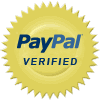More Strategies for Overactive Bladder
 Pelvic Muscle Rehabilitation
Pelvic Muscle Rehabilitation Exercising and strengthening the pelvic floor muscles may be done alone or with the assistance of biofeedback therapy. Biofeedback involves a special sensor placed in the vagina or rectum and sensors placed upon the abdomen. The contraction of your muscles can then be visualized on a screen, thereby giving you feedback as to when you are doing the exercises correctly.
These exercises are commonly known as Kegel exercises or pelvic floor exercises. This is a learned skill of isolating, contracting and relaxing the pelvic floor. It is thought that by correctly squeezing these muscles, a message is sent to the bladder to stop contracting. It is also felt that a stronger pelvic floor reduces leakage of urine.
Steps for doing Pelvic Floor Exercises
- Identify the correct muscles. While urinating, try to stop the urine stream. This is the correct set of muscles to use. Do not regularly do this while urinating- this step is only to learn to isolate the muscle group. It is important to relax your abdominal muscles at the same time. The pelvic floor muscles are the same ones you use to keep from passing gas.
- Exercise the muscles regularly. Squeeze the pelvic floor for 5 to 10 seconds, then relax. Do 3 to 5 sets twice a day or more. They may be done while you are engaged in other activities. Remember to relax the abdominal muscles while you squeeze the pelvic floor.
Dietary Considerations
Certain foods and beverages are known to have an irritating effect upon the bladder in certain people. Some foods and beverages contain chemicals that are natural diuretics. This prompts the kidneys to produce more urine and ultimately increases the amount of urine in the bladder. It is important to understand that different foods and beverages may affect each person in a different way. Nonetheless, certain dietary components are common culprits in contributing to an overactive bladder. These include the following:
- Coffee
- Tea
- Alcohol
- Carbonated drinks, diet and regular
- Chocolate
- Citrus fruits
- Tomato products
- Acidic foods
- Spicy foods
- Artificial sweeteners
Eliminating or decreasing consumption of the above items may improve your bladder symptoms. It is important to stay adequately hydrated though, as avoiding fluids to an excessive degree may actually worsen bladder symptoms and cause other health problems.
Healthy Bowel Habits
Constipation has been shown to negatively affect bladder function in adults as well as children. This may be due to direct pressure upon the bladder and/or the secondary effects upon the muscles of the pelvic floor. Constipation may be caused in part by a limited fluid intake, a learned habit of many people suffering from overactive bladder. A diet lacking in sufficient fiber is another major cause of constipation. This can be avoided by simple dietary changes and lifestyle changes
Preventing Constipation
- Eat at least 2 serving of fruit per day, at least one in uncooked form
- Eat at least 2 serving of vegetables per day
- Maintain an adequate fluid intake
- Use whole grain breads and cereals
- Include prunes or prune juice in your diet
- Exercise regularly

- The Natural Bladder®
- About Us
- Disclaimer
©2020 The Natural Bladder®. All rights reserved.
The material provided on this site is for strictly informational and educational purposes only. It is not meant to replace or substitute for the recommendations or advice of your physician or health care provider. The information contained in this site should not be used for diagnosing or treating a health problem or disease. If you believe you have a medical condition or problem contact your health care provider.
The statements contained in this website have not been evaluated by the Food and Drug Administration. The products are not intended to diagnose, treat, cure or prevent disease.
The statements contained in this website have not been evaluated by the Food and Drug Administration. The products are not intended to diagnose, treat, cure or prevent disease.










